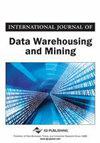使用数据分析进行犯罪分析
IF 0.7
4区 计算机科学
Q4 COMPUTER SCIENCE, SOFTWARE ENGINEERING
引用次数: 0
摘要
数据分析是一种潜在的犯罪分析方法,已经显示出有希望的结果,特别是描述性和预测性技术。数据分析可以探索以前的犯罪事件,寻找隐藏的相关性和模式,这可能会用于预防犯罪和资源管理。本研究的目的是利用监督技术建立一个犯罪分析模型来预测芝加哥严重犯罪的逮捕状况。这是基于具体的指标,如时间框架,地区,社区和殴打的地点,以及犯罪类型等。我们使用时间序列和聚类技术来帮助我们识别有影响的特征。然后,有监督的机器学习算法根据特定时间范围和地点的电池和攻击事件对特征子集进行建模,以预测逮捕状态响应变量。从Naïve贝叶斯、决策树和支持向量机(SVM)算法中得出的模型显示,在芝加哥的一些社区,在特定时间内的预测准确率很高。本文章由计算机程序翻译,如有差异,请以英文原文为准。
Crime Analyses Using Data Analytics
One potential approach for crime analysis that has shown promising results is data analytics, particularly descriptive and predictive techniques. Data analytics can explore former criminal incidents seeking hidden correlations and patterns, which potentially could be used in crime prevention and resource management. The purpose of this research is to build a crime analysis model using supervised techniques to predict the arrest status of serious crimes in Chicago. This is based on specific indicators, such as timeframe, location in terms of district, community, and beat, and crime type among others. We used time series and clustering techniques to help us identify influential features. Supervised machine learning algorithms then modelled the subset of features against incidents related to battery and assaults in specific timeframes and locations to predict the arrest status response variable. The models derived from Naïve Bayes, Decision Tree, and Support Vector Machine (SVM) algorithms reveal a high predictive accuracy rate at certain times in some communities within Chicago.
求助全文
通过发布文献求助,成功后即可免费获取论文全文。
去求助
来源期刊

International Journal of Data Warehousing and Mining
COMPUTER SCIENCE, SOFTWARE ENGINEERING-
CiteScore
2.40
自引率
0.00%
发文量
20
审稿时长
>12 weeks
期刊介绍:
The International Journal of Data Warehousing and Mining (IJDWM) disseminates the latest international research findings in the areas of data management and analyzation. IJDWM provides a forum for state-of-the-art developments and research, as well as current innovative activities focusing on the integration between the fields of data warehousing and data mining. Emphasizing applicability to real world problems, this journal meets the needs of both academic researchers and practicing IT professionals.The journal is devoted to the publications of high quality papers on theoretical developments and practical applications in data warehousing and data mining. Original research papers, state-of-the-art reviews, and technical notes are invited for publications. The journal accepts paper submission of any work relevant to data warehousing and data mining. Special attention will be given to papers focusing on mining of data from data warehouses; integration of databases, data warehousing, and data mining; and holistic approaches to mining and archiving
 求助内容:
求助内容: 应助结果提醒方式:
应助结果提醒方式:


